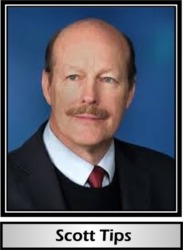Editor’s Note: This article is intended for information purposes only. Because state and municipal laws vary greatly, as do the circumstances of individual cases, readers are advised to contact an attorney for specific legal advice. © Scott C. Tips 2010
On June 10th, President Barack Obama issued an Executive Order creating the “National Prevention, Health Promotion, and Public Health Council.” As with all government programs and bureaucracy, this additional layer of bureaucracy is ostensibly intended to do good, in this particular case, to develop and promote a national strategy for improving Americans’ health. As the Executive Order puts it, this Public Health Council will write up and give to the President “a list of national priorities on health promotion and disease prevention to address lifestyle behavior modification (including smoking cessation, proper nutrition, appropriate exercise, mental health, behavioral health, substance-use disorder, and domestic violence screenings) and the prevention measures for the five leading disease killers in the United States.” Obviously, the authors of this Order have never heard of the Law of Unintended Consequences.
The Law of Unintended Consequences
The Law of Unintended Consequences is that actions of people—and especially of government—always have effects that are unanticipated or unintended. Most often, however, this Law “illuminates the perverse, unanticipated effects of legislation and regulation” (see www.econlib.org/library/Enc/UnintendedConsequences.html).
So, the government creation of yet another costly and top-heavy “council” to help prevent illnesses may sound wonderful to some people—especially if it is to include some complementary and alternative approaches; but, it is absolutely doomed to failure and to create more illness and more sickness in the United States.
The Federal government has already proven itself utterly incapable of successfully advancing any major program. Whether it was President Lyndon B. Johnson’s failed War against Poverty in the 1960s, President Richard Nixon’s failed War against Cancer launched in 1970, President Gerald Ford’s “Whip Inflation Now” program that saw even frighteningly-higher inflation under President Jimmy Carter, all of these Presidents’ War on Drugs, or President George W. Bush’s failed War on Terror, the list is endless. You name it, whatever problem was addressed, that problem became significantly worse after millions and billions of dollars were wastefully pumped into these “Wars.” And, you do not even have to look far into the past, just think about the Federal government’s botched handling of the recent Hurricane Katrina and BP oil-spill disasters.
You do not achieve better health by centralizing health-care decisions in Washington, D.C. You achieve better health by decentralizing health-care decisions and putting them back in the very hands of those most likely to suffer the benefits and detriments of good and bad decisions: the individual man or woman. More health freedom, not less, is the road to better health.
What the Executive Order Does
This Executive Order basically parallels what is already in the recently passed Health Care Insurance Reform Act. In that respect, it is nothing new. (See text of Executive Order at www.thenhf.com/government_affairs/federal/ExOrder-HealthPromotionHealthCouncil.pdf).
As mentioned, it creates a Public Health Council, which will have as its chairman the U.S. Surgeon General over a star-studded cast of Federal functionaries such as the Secretary of Agriculture, the Secretary of Labor, the Secretary of Health and Human Services, the Secretary of Transportation, the Secretary of Education, the Secretary of Homeland Security, the Administrator of the Environmental Protection Agency, the Chairman of the Federal Trade Commission, the Director of National Drug Control Policy, the Assistant to the President and the Director of the Domestic Policy Council, the Assistant Secretary of the Interior for Indian Affairs, the Chairman of the Corporation for National and Community Service and the head of any other executive department or agency that the Chairman may determine to be appropriate. Notice, though, that the head of the U.S. Food and Drug Administration (FDA) is not included. In fact, no one from FDA is included.
Of course, these high-brows will just meet and not condescend to do any real work, which will be left to their assistants and swarm of lackeys. And since—unlike in the free market—the feedback mechanisms for their health decisions will be so attenuated, convoluted and based in politics and not practical economics, these decision-makers will squander our money, waste their time and promote ill health.
They are charged with coordinating and leading all Federal agency actions on the “prevention, wellness, and health promotion practices, the public health system, and integrative health care in the United States” (Order, §3[a]). Further, they are to “develop, after obtaining input from relevant stakeholders, a national prevention, health promotion, public health, and integrative health-care strategy that incorporates the most effective and achievable means of improving the health status of Americans and reducing the incidence of preventable illness and disability in the United States, as further described in section 5 of this order” (Order, §3[b]).
They will then “provide recommendations to the President and the Congress concerning the most pressing health issues confronting the United States and changes in Federal policy to achieve national wellness, health promotion, and public health goals, including the reduction of tobacco use, sedentary behavior, and poor nutrition” (Order, §3[c]) and “consider and propose evidence-based models, policies, and innovative approaches for the promotion of transformative models of prevention, integrative health, and public health on individual and community levels across the United States” (Order, §3[d]).
An Advisory Group is also established by the Order. The Group will have no more than 25 advisors from outside the Federal government, to be appointed by the President, and are to come from “a diverse group of licensed health professionals including integrative health practitioners who are representative of or have expertise in: (1) worksite health promotion; (2) community services, including community health centers; (3) preventive medicine; (4) health coaching; (5) public health education; (6) geriatrics; and (7) rehabilitation medicine” (Order, §4). The Order further states that the “Advisory Group shall develop policy and program recommendations and advise the Council on lifestyle-based chronic disease prevention and management, integrative health care practices, and health promotion” (Order, §4[c]).
The Chairman is then to use the Advisory Group’s input, in consultation with the Council itself, to then “develop and make public a national prevention, health promotion, and public health strategy (national strategy)” (Order, §5). This strategy shall then be reported to the President and any relevant committees of Congress. (Order, §6).
To some, this will sound great. Integrative health? Mentioned in an Executive Order? But sitting in an Advisory Group in which integrative practitioners will almost certainly be outnumbered (outvoted)? Then, advising the Surgeon General, who in turn might or might not use our integrative-health ideas to develop a national healthcare strategy? Which strategy might or might not even be acted upon by a President put in power by special-interest groups antithetical to integrative healthcare? Can you see how tenuous this “influential” connection becomes? Smart people would call it “window-dressing,” because unfortunately that is all it will ever be.
One can always be hopeful. But, to paraphrase H.L. Mencken, “To say that the cure for bad health-care legislation is for more good medicine to be part of it, is like saying that the cure for prostitution is for more virgins to enter brothels.” Better to dismantle the bureaucracy, or at least reduce its powers, than to try to feed fresh meat piecemeal into corrupt and inept institutions.
Backdoor Codex?
Some well-intentioned persons—hyper-sensitive to the threat of Codex to our health freedoms, a threat that I agree does exist—have claimed that this Executive Order is a backdoor attempt to adopt Codex Alimentarius “science-based” guidelines in the United States. These people point to Order Section 6(g), where it says that the Council’s report shall “contains specific plans to ensure that all prevention programs outside the Department of Health and Human Services are based on the science-based guidelines developed by the Centers for Disease Control and Prevention under subsection (d) of this section.” But does the use of the words “science based” mean that these guidelines are synonymous with Codex guidelines?
Not really. While the Executive Order is real, it is not imposing Codex rules on the United States. As National Health Federation lobbyist Lee Bechtel correctly points out, “There is no direct policy link between this Council and Codex, or with the way in which the FDA regulates food and food supplements.”
Consider also that Section 6(d) (to which Section 6[g] refers) states: “(d) contains specific science-based initiatives to achieve the measurable goals of the Healthy People 2020 program of the Department of Health and Human Services regarding nutrition, exercise, and smoking cessation, and targeting the five leading disease killers in the United States.” These “science-based” rules are to be issued by the Centers for Disease Control and Prevention, not Codex. In addition, the above deals with exercise and smoking cessation, which are outside the subject area of Codex guidelines, which only govern food.
Having said that, this 6(d) language does mention the word “nutrition” as well (albeit within the context of the Healthy People 2020 program of the DHS); and nutrition is a subject of Codex. As such, “science-based” guidelines applied here could allow a smoother interface between domestic and international food guidelines at a small contact point that they might possibly have in the future. It would be akin to saying that pantyhose manufacturing techniques are related to food because the nylon fabric might someday be used in straining soup. So, in a broader and greatly-more-general context, there is a very-small kernel of strained logic to support the belief that this could be another small step towards the Codex “door.” But is it the door itself, backdoor or otherwise? Absolutely not. WF
Published in WholeFoods Magazine, Aug. 2010










